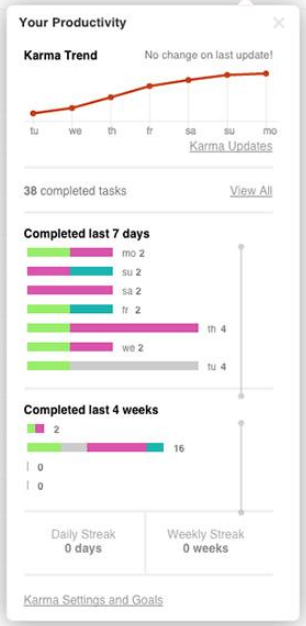Todoist vs CommandHound
A review of Todoist in PC Magazine concludes that Todoist has a clean and simple UI with lots of features that make it a clear “Editors’ Choice.”

Checklists Effectiveness Grows When Tracking Results at the Individual Level Drive Accountability
With such a glowing review, one wonders how CommandHound could take one of the most popular to-do list apps, and the whole task management application genre, to the next level.
Improving Task Management
From the outset, CommandHound, a Rising Star Award Winner, defined a set of principles to guide the achievement of its overall mission: to drive accountability in the workplace as a way to significantly impact business performance:
1. Business focused
Unlike Todoist, which focuses on individual consumers as its target user, CommandHound was built from the ground up for business users and with business applications in mind.
2. Escalation
While Todoist focuses on simple to-dos with due dates and reminders, CommandHound implements an “escalation” engine that reroutes to-do items that are not completed on time to higher levels in an organization to make sure things get done. This escalation engine relentlessly reminds parties involved that things need extra attention when they actually need extra attention to make sure nothings falls through the cracks.
3. Cross-functional business processes
CommandHound allows for the definition of cross-functional processes to help bring teams across multiple organizational units together to accomplish common business objectives. This approach also helps management to monitor that these cross-functional processes are getting done as expected.
4. Execution performance tracking
Unlike Todoist, which only tracks whether to-do items are completed or not, CommandHound keeps track of specific completion performance metrics at the individual and team levels, such as:
- Whether items were completed on time or not
- How many times items were escalated before completed
- Which team performed better in completing things on time
- Which process was most often completed as expected
CommandHound uses this information to drive accountability by tying actual completion performance to individuals and teams’ performance and/or incentive programs.
5. Management dashboards
While Todoist’s individual dashboards tell users how many tasks they completed last week or what is due the following week, CommandHound utilizes more comprehensive dashboards to help management monitor progress across departments, critical business processes, and/or organizational units at a glance.


CommandHound’s dashboards allow management to refocus their attention away from low-value operational details and on to more high-value strategic endeavors.
Next Steps
Would you like to learn more about how CommandHound took applications like Todoist to the next level?
Click below and schedule a quick 15-minute online demo to see how CommandHound uses accountability to drive business performance.
